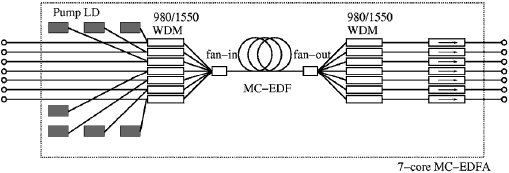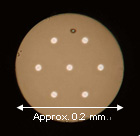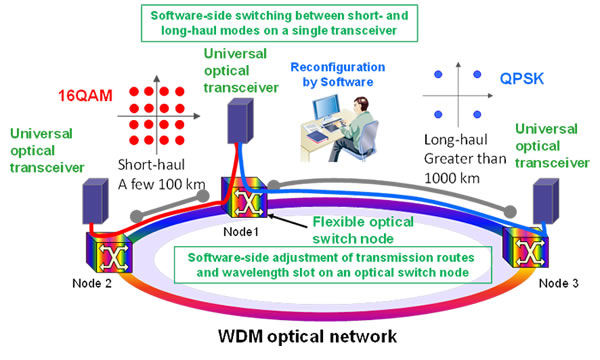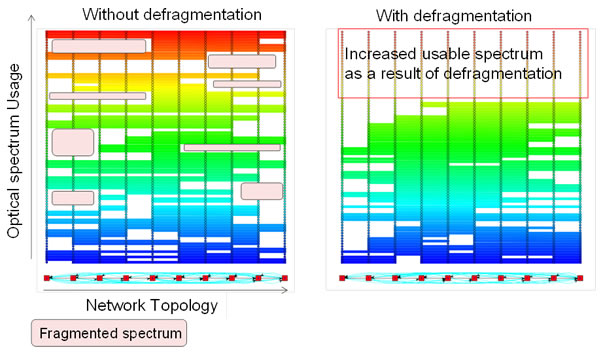New
Fiber-Optic Infrastructure Will Make NYC Nation's Most Advanced and Robust
Communications Center
NEW YORK,
Dec. 19, 2012 /PRNewswire/ -- Less than seven weeks after Hurricane Sandy,
Verizon has finalized another important step in the transformation of the
communications infrastructure of lower Manhattan by completing the installation
of fiber-optic cables between the company's two critical central switching
offices there and buildings put out of service by the storm surge.
The
completion of the fiber-installation phase of the project – with more than
5,000 miles of fiber strands already in place -- enables Verizon to
dramatically modernize communications capabilities for customers as it restores
services to the businesses and office buildings in lower Manhattan that were
impacted by the hurricane. Once the
project is complete, the area will have the nation's most advanced
communications infrastructure, providing customers with the highest level of
service and reliability. Furthermore,
the modernization project will make lower Manhattan "future-proof,"
enabling Verizon to continually update the communications infrastructure with
new capabilities for decades to come.
(Note: To view or download photos of Verizon
technicians constructing a telecom room at 55 Water St., installing fiber-optic
cables at John and Pearl streets, and a Verizon representative taking FiOS
orders in the lobby at 55 Broad St., go to http://vz.to/VNPcQ0. For additional photos, visit
http://vz.to/UaaBH1.)
During the
restoration process, Verizon has provided alternate communications solutions to
thousands of small businesses and residential customers in the area and
elsewhere around the metro area to get them back in business and their
communications flowing. The company has
provided call-forwarding capabilities to approximately 7,000 lines of consumers
and small businesses so that calls are automatically forwarded to a working
landline or cellphone number. In
addition, the company has provided at no charge to customers more than 2,600
Verizon Wireless Home Phone Connect and Verizon 4G LTE Jetpack™ Mobile Hotspot
devices.
As building
owners and managers complete these steps, Verizon is rapidly completing the
work of connecting the newly laid fiber to new electronic systems and turning
up service. The steps these building
owners are taking, in conjunction with the new fiber infrastructure from
Verizon, will provide additional protection for the communications
infrastructure in lower Manhattan in the event of future large-scale weather
events.
Verizon
continues to operate two command centers in Manhattan where its operations and
engineering teams can swiftly design and reconfigure new fiber systems and
routes, and then work with building managers to identify space within their
structure to locate the new equipment, electronics and cabling.
"The
work Verizon is doing now will make us a smarter, faster, better-connected city
and region," said Mitchell Moss , Henry Hart Rice Professor of Urban
Policy and Planning at New York University.
"These repairs will actually lay the groundwork for a new era of
growth and higher efficiency, which will benefit everyone."
5,000 Miles
of Fiber Strands Already Installed
The company
estimates that more than 70 percent of the affected buildings served by its
Broad Street switching office, where copper services were most significantly
damaged, have fiber-optic cables and facilities serving them, with many
buildings downtown having full service.
In
addition, the company estimates that it has already installed in the dense
lower Manhattan area more than 5,000 miles of fiber strands. Thus far, more than 100 tons of copper cables
have been removed from the company's network in the area – 30 percent more than
all the copper in the Statue of Liberty.
And more is being removed each day.
The copper is being collected and recycled in an environmentally
sensitive process.
"We
are doing years' worth of work in just a few weeks' time, and doing it round
the clock," said Martin Burvill , senior vice president of global
operations for Verizon Enterprise Solutions.
"We are keenly focused on transforming the communications
infrastructure of lower Manhattan with this new architecture in a way that
fully benefits our residential and business customers.
"Although
this work is being done away from the public's view – in basements, manholes
and in still-darkened office towers – it will have a visible and lasting impact
by providing a critical part of the city with a network that is world-class,
and built for the communications needs of the 21st century," Burvill said.
Verizon has
also had an open and continuous dialogue with manufacturers and vendors that
supply the industry with electronics necessary to terminate sophisticated fiber
networks and the wide range of services they deliver. The great need for equipment prompted by
Hurricane Sandy restoration efforts continues to put pressure on supply chains
of specialized equipment, which in turn affects restoration efforts.
Copper
cables were destroyed that served businesses and residences in the area south
of Worth Street, from the East River to the Hudson River. These cables were rendered inoperable as the
result of the unprecedented flooding, the mixture of salt water and diesel fuel
in some buildings from compromised tanks that were in place to fuel generators,
and the loss of air pressurization systems that help protect copper cables from
water infiltration.
Verizon
Communications Inc. (NYSE, Nasdaq: VZ), headquartered in New York, is a global
leader in delivering broadband and other wireless and wireline communications
services to consumer, business, government and wholesale customers. Verizon Wireless operates America's most
reliable wireless network, with nearly 96 million retail customers
nationwide. Verizon also provides
converged communications, information and entertainment services over America's
most advanced fiber-optic network, and delivers integrated business solutions
to customers in more than 150 countries, including all of the Fortune 500. A Dow 30 company with $111 billion in 2011
revenues, Verizon employs a diverse workforce of 184,500. For more information, visit www.verizon.com.
VERIZON'S
ONLINE NEWS CENTER: Verizon news releases, executive speeches and biographies,
media contacts, high-quality video and images, and other information are
available at Verizon's News Center on the World Wide Web at
www.verizon.com/news. To receive news
releases by email, visit the News Center and register for customized automatic
delivery of Verizon news releases.
SOURCE
Verizon Communications, Inc.
PR Newswire
(http://s.tt/1xq03)





